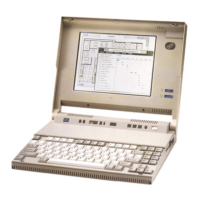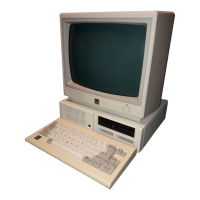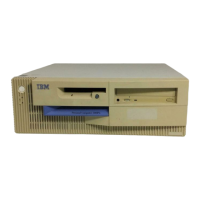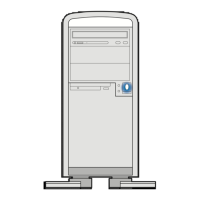power
supply.
A device that produces the power needed
to operate electronic equipment.
processor.
(1)
In a computer, a functional unit that
interprets and executes instructions. (2) A functional
unit, a part
of
another unit such
as
a terminal or a
processing unit, that interprets and executes
instructions. (3) Deprecated term for processing
program. (4) See microprocessor.
program. (1) A series of actions designed to achieve a
certain result. (2) A series of instructions telling the
computer how to handle a problem or task. (3) To
design, write, and test computer programs.
programming language. (1)
An artificial language
established for expressing computer programs. (2) A
set of characters and rules with meanings assigned prior
to
their use, for writing computer programs.
programming system. One
or
more programming
languages and the necessary software for using these
languages with particular automatic data-processing
equipment.
prototype card. A blank circuit card which can be used
to create custom adapters.
RAM. Random access memory. Read/write memory.
random access memory (RAM). Read/write memory.
read-only memory (ROM). A storage device whose
contents cannot be modified. The memory
is
retained
when power is removed.
read/write memory. A storage device whose contents
can be modified. Also called RAM.
reverse video. A form of highlighting a character, field,
or cursor by reversing the color of the character, field,
Glossary-6
r-...
~
)
,.,-....,

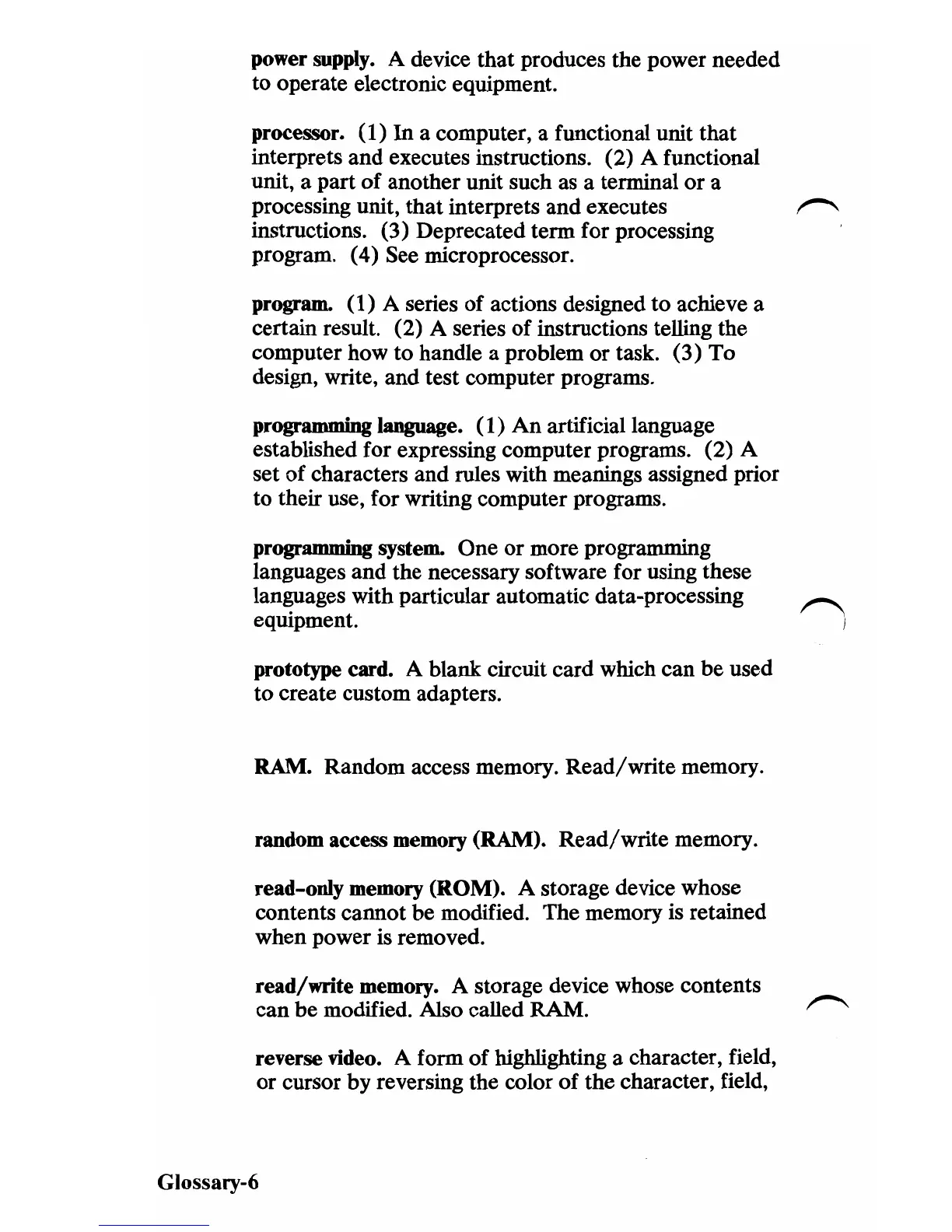